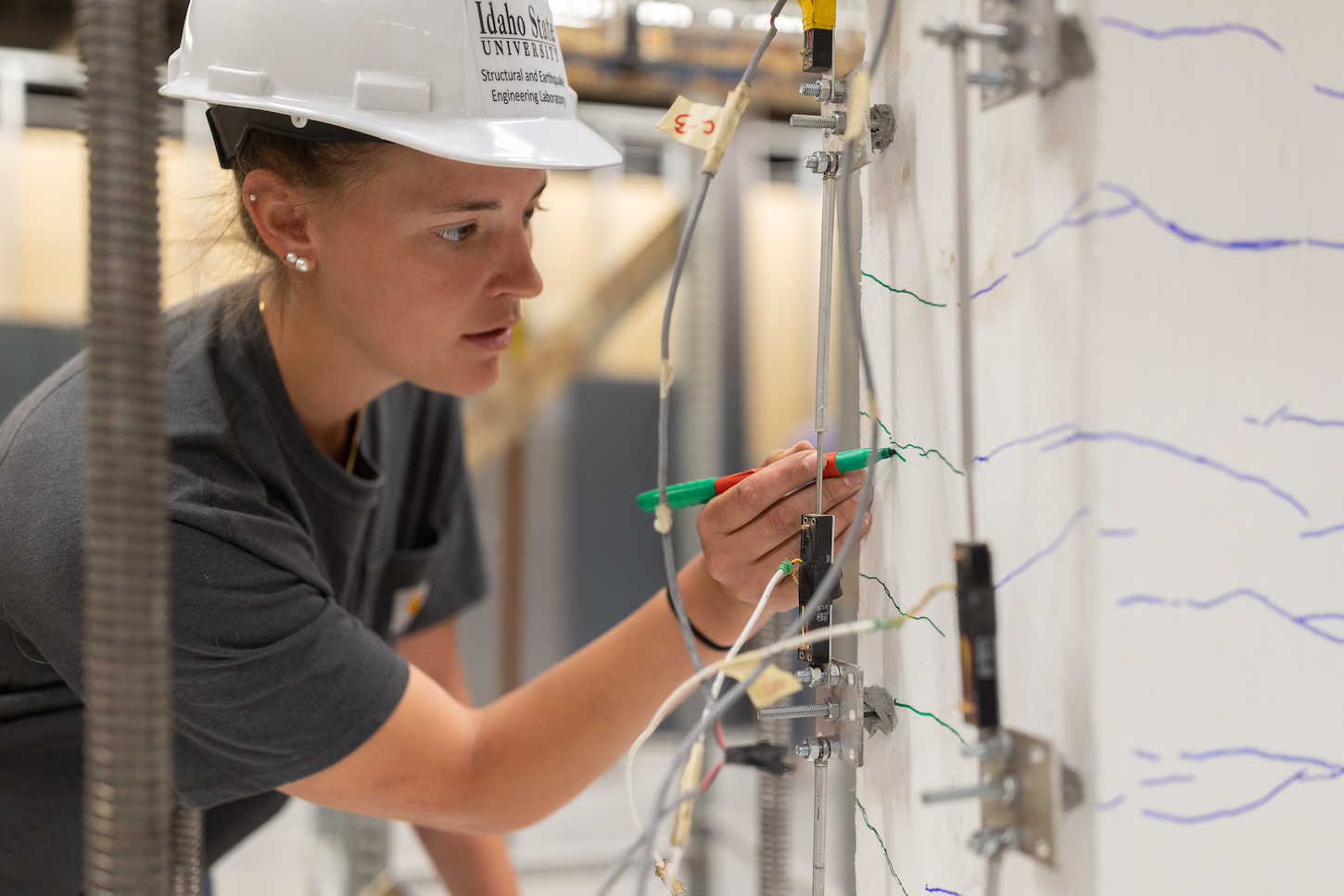ISU Research into Earthquake-Resilient Bridges Wins National Award from AASHTO
November 15, 2024

A project spearheaded by structural engineers at Idaho State University and the Idaho Transportation Department has taken home one of the transportation sector's highest research awards.
The project, “Experimental Validation of Repair Methods for Earthquake-Damaged Bridges Incorporating ITD’s Precast Pier System,” was named a winner of the American Association of State Highway and Transportation Officials (AASHTO) High Value Research awards. The awards recognize outstanding transportation research that demonstrates significant value and impact and addresses the most pressing issues in transportation.
“Winning an AASHTO High Value Research award is a testament to our relevant research at ISU that aims to improve the resilience of communities and transform our infrastructure,” said Mustafa Mashal, professor of civil engineering and principal investigator for the project. “An AASHTO High Value Research award is one of the most prestigious an institution can receive for transportation research, and I am immensely proud of our research team.”
The ISU team’s research focused on retrofitting damaged precast and cast-in-place concrete bridges following an earthquake. Contributing to the project were Kathryn Hogarth, a former doctoral student; Manish Acharya, a master's student; Arya Ebrahimpour, professor of civil engineering; Jared Cantrell, laboratory manager; Tadesse Wakjira, adjunct faculty; and Mashal. The group’s findings will be presented by Mashal at a special session during the 104th Transportation Research Board Annual Meeting in Washington, DC, the largest global gathering of transportation professionals and researchers.
The project was a follow-up to another research project sponsored by ITD and led by Mashal, where ISU researchers tested a concept for a precast bridge system for use in seismically active areas. The precast pier system developed by the research team was recently implemented on Interstate 15 at Exit 80 in Fort Hall.
Looking ahead, researchers at ISU are now looking into how state-of-the-art tools such as machine learning (ML) and artificial intelligence (AI) can be utilized to improve the resiliency of structures while optimizing materials, sustainability, cost, and time.
"AI and machine learning can transform infrastructure and community resilience to natural hazards such as earthquakes by improving disaster risk management, enabling accurate real-time monitoring, and supporting quick damage assessments,” said Tadesse Wakjira, adjunct faculty member in the civil engineering department. “Plus, when combined with multi-objective optimization algorithms, they let us develop strong, cost-effective, and sustainable materials."
For more information on Idaho State University’s Department of Civil and Environmental Engineering, visit isu.edu/cee.
Prospective students can schedule a campus tour at isu.edu/visit.
Categories:
